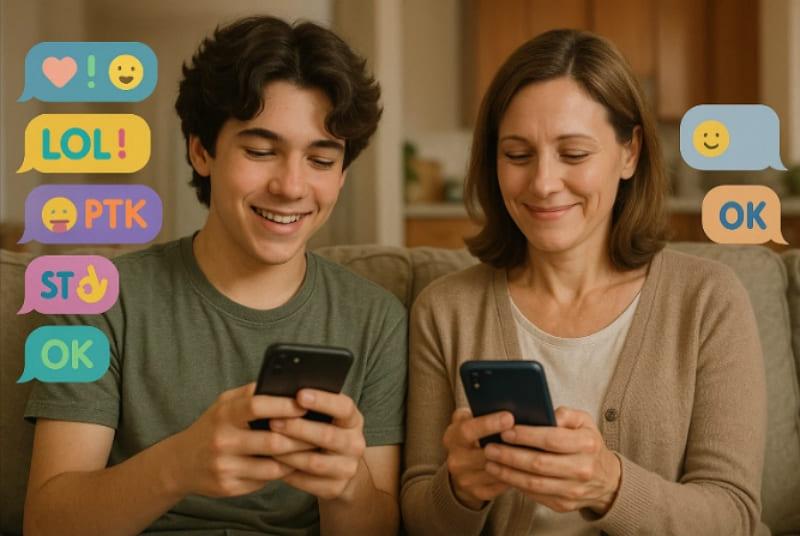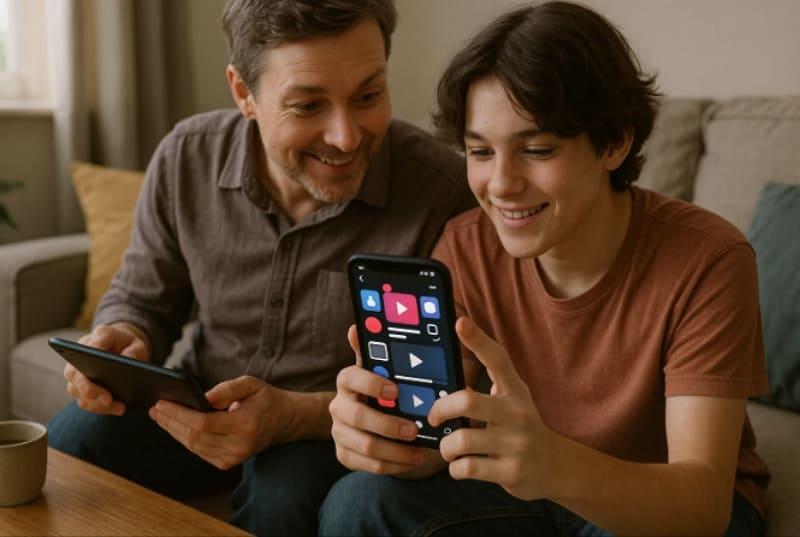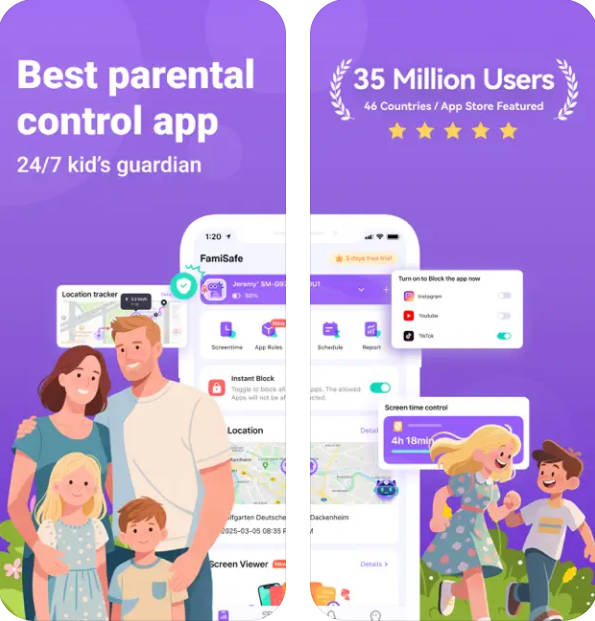Nowadays, parents often feel left out of conversations with their children, especially when their kids use terms like "yeet" or "rizz" that seem like a foreign language. This ongoing flow of slang can make it difficult to understand what your child truly means, causing parents to have trouble connecting during daily conversations. The divide between generations only increases when slang becomes the primary means of expression for teens.
That’s why grasping the words like yeet meaning isn’t about being trendy; it’s about remaining linked. Understanding the significance of these viral phrases enables parents to interpret their children's communication methods, recognize when slang conceals underlying concerns, and leverage it to initiate discussions. This guide analyzes this and related slang while offering useful tips for parents to strengthen their relationships with their Gen Z and Gen Alpha children.

In This Article
Part 1. What Does “Yeet” Mean in Teen Slang?
If you're a parent, you might have heard your child use the word "yeet" in chat and wondered what "yeet" means. It's a popular teen slang that means forcibly throw something, especially with enthusiasm or little care. If someone states, "I just yeeted my backpack across the room," implying they hurled it with enthusiasm or vigor. The term frequently injects an inflated tone into any behavior, indicating that an individual acted impulsively.

Other than the verb, yeet is also commonly used as an exclamation that is used to show excitement, surprise, or approval. Teens may yell “Yeet!” when making a remarkable play in sports or achieving something impressive in video games, giving the moment extra flair. The word has been developed into a multi-use term in Gen Z slang, which can be heard online and in real life.
Part 2. 15 Other Popular Slang Like “Yeet” Parents Should Know
Once you understand the meaning of yeet, it’s easier to see why kids use slang so naturally. Below is a quick list of other popular terms often used alongside “yeet”:
| Word/Phrase | Meaning/Usage |
| Slay | Do something extremely well or impressively |
| Ate | Excelled at something, “left no crumbs” |
| It’s giving | Express strong vibes, often followed by descriptions (“queen”) |
| Go Touch Grass | Urge to log off, be present offline |
| Mid | Mediocre or average |
| SMDH | Shaking my damn head; disbelief or disappointment |
| Simp | Overly eager for affection or validation |
| Stan | Dedicated fan or strong supporter |
| Sus | Suspicious; acting shady |
| Drip | Stylish clothes or impressive fashion sense |
| Slaps | Exceptionally good, e.g., “this song slaps” |
| Smh | Shaking my head, usually in disapproval |
| Bet | Sure, agreement, or affirmation |
| Snatched | Looks amazing, flawless; “on point” |
| Vibe/Vibing | Enjoying the moment, good energy |
Part 3. Why Understanding “Yeet” Matters for Parents?
Many parents wonder not just what "yeet" means online, but why kids use it so much in everyday talk. Understanding "yeet" helps parents connect better with their child's digital world, and here are some of the reasons:

- Avoid Misinterpretation: Without context, parents may misread their child’s messages, causing unnecessary conflict.
- Spot Risky Online Trends: Words like “yeet” sometimes connect to viral stunts where kids throw objects—or worse. Awareness helps prevention.
- Balance Academic Skills: Overuse of slang may affect formal communication. Parents can encourage balance between fun slang and proper writing.
- Bridge the Generation Gap: Knowing terms like “yeet” in WWE, TikTok, or chats prevents parents from appearing out of touch.
Decode Emotions: Kids may use “yeet” sarcastically or to hide frustration. Understanding tone strengthens emotional connection.
Part 4. Tips to Connect Better With Gen Z & Gen Alpha Kids
If your teen texts, “That game was mid, but the ending had me yeeting my phone across the room,” knowing both “mid” and “yeet” makes the message less confusing. Here are practical tips:
💡 Tip 1. Mirror Their Style (Lightly!)
Do your children often text using emojis, abbreviations, and silly slang? Try a bit of that in your response. This does not imply using too much or acting like a teenager, but a bit of one or two common terms can help make you seem less intimidating. Children will be more willing to open up than recoil when they observe you trying to do so.

📱 Tip 2. Join Their Digital World
Now that you understand the meaning of yeet slang, spend some time investigating the platforms where slang comes from, whether that’s TikTok or Instagram. Spending time in the same locations will enable you to naturally absorb the slang and stay updated on shifts without needing to ask. This does not just make you stay on top of things but also provides you with some entertaining icebreakers to talk to your kids.

🛡️ Tip 3. Use Smart Tools for Backup
You can also use FamiSafe, a parental app designed to help parents monitor kids’ digital communication, especially the use of modern slang across social media. It flags concerning phrases, letting parents easily understand the context behind popular or risky slang without deciphering every message. FamiSafe covers messaging platforms like Instagram and more, centralizing all alerts for questionable language or explicit terms so parents don’t need to check each app separately.

It allows parents to add specific words or slang they would like to keep track of and be instantly notified when used in their child's messages. Besides, FamiSafe helps parents understand the vocabulary their children use without needing to ask, making conversations more natural. It also provides subtle hints on what is happening in the digital world, allowing you to mentor your child without invading their space.
Conclusion
In 2025, slang like “yeet” may seem silly at first glance, but it plays a significant role in how kids communicate. By learning what yeet means—and keeping up with similar terms—parents can reduce misunderstandings and stay connected with their children’s digital lives.
When in doubt, innovative solutions like FamiSafe make it easier to monitor online slang safely and respectfully. By combining awareness with the right tools, parents can enjoy healthier conversations and closer relationships with their kids.


